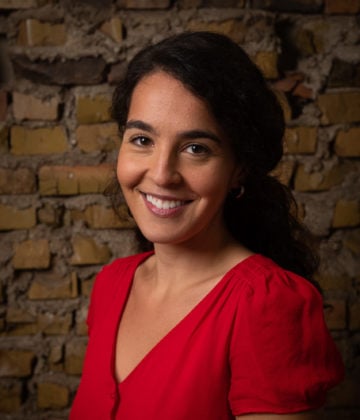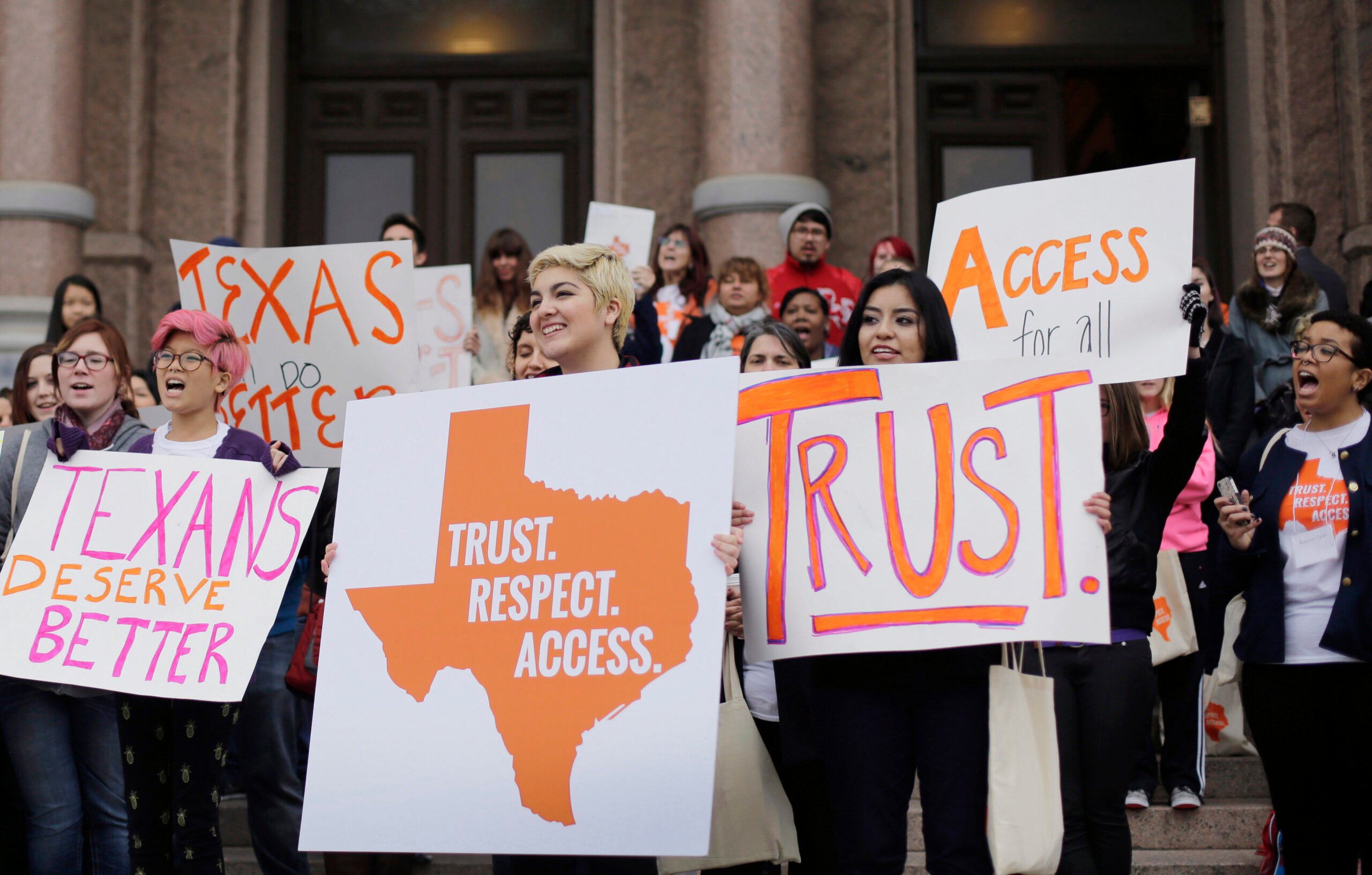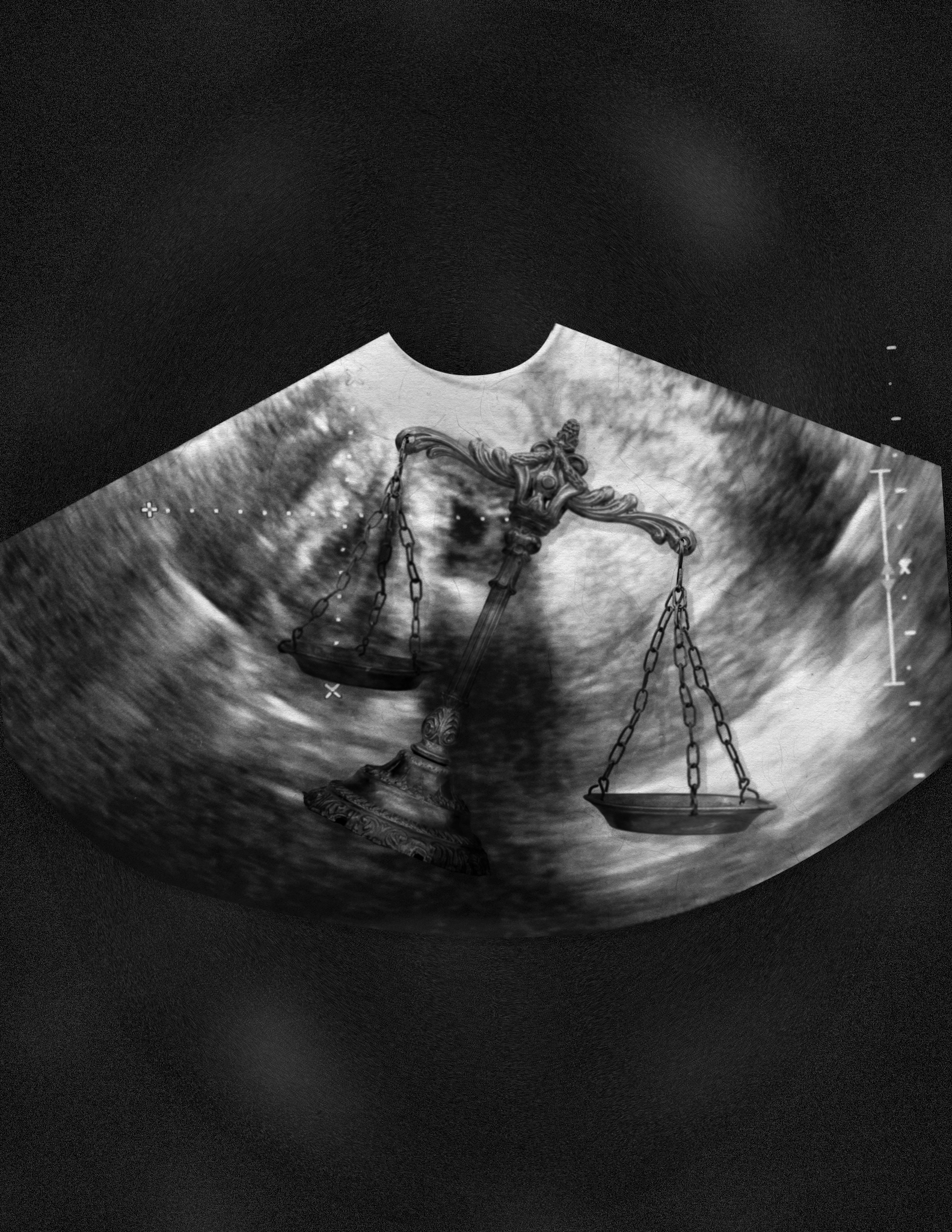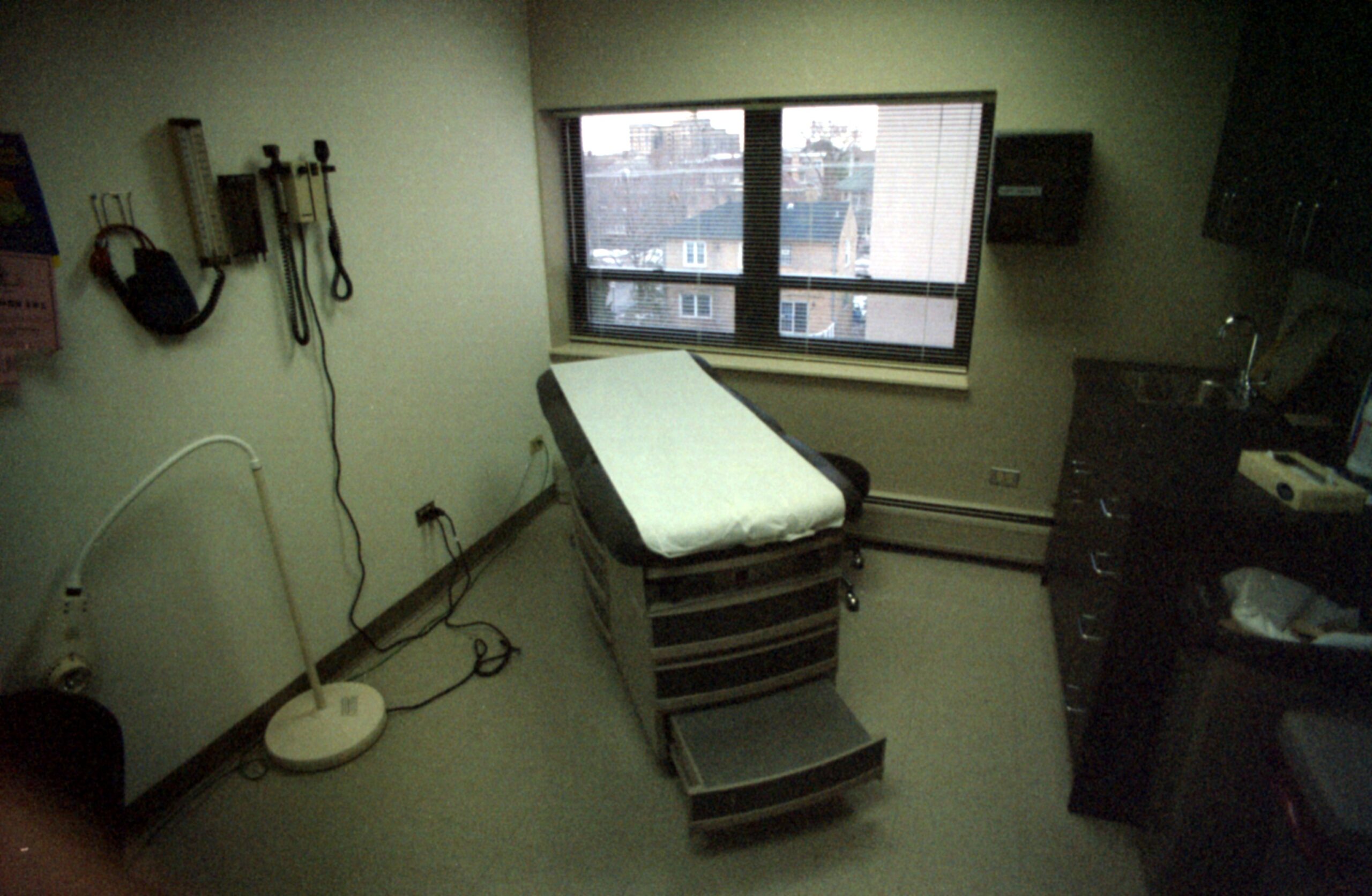The Traveling Midwife
In far West Texas, some women have to travel hours to give birth, endangering themselves and their babies. Could midwives help fill in the gap?

By Sophie Novack
June 15, 2020
Dawn Cockrell worried she wouldn’t make it in time.
It was the middle of the night when the call came, and she sprung out of bed and threw on the scrubs she’d hung up the day before. She piled boxes with oxygen tanks, medications, and other supplies into the trunk of her gray Hyundai and set off from her home in Alpine. The road opened up once she left the boundaries of the small West Texas town; the stars turned the sky to blue-gray, silhouetting the mountains in the distance. The dry desert air blew in through the front windows. Even in hurried moments like this, she could appreciate why she did this work, in this place.
She pressed on the gas. Past the Marfa Lights viewing stop off Highway 90, through the center of town, south past the inland Border Patrol checkpoint. Then the directions become more opaque: Twenty miles or so after the “Y” in the road, turn onto the winding dirt path; careful over the cattle guards; keep an eye out for wild hogs. If you’ve passed the creek, you’ve gone too far.
It’s just over an hour drive from Cockrell’s home to the white house on a hill that sits in the vast, empty space between Marfa and Big Bend State Park, where Rachel Mellard had woken that night to forceful contractions. She’d spent the past couple days in latent labor, walking around the ranch where she and her family live and work—tending cattle, raising horses, and home-schooling her four young boys. The Mellards make the hourlong drive into Alpine for church on Sundays; occasionally, they stop in Marfa, about 40 minutes away, to visit the post office or feed store. The family doesn’t have much in common with the visitors who’ve transformed the longtime ranching community into an unlikely arts hub, Mellard says. “It’s like two different worlds. We live in our own little world and they live in theirs.”
When her contractions became more consistent overnight, Mellard’s husband called Cockrell to tell her the baby would be there soon.
The 49-year-old traveling midwife is used to speeding—she figures it’s better her than the person in labor. Sometimes, when police saw the bumper sticker Cockrell had on an old van, “Midwives help people out,” they’d just wave her on. (She’s debating buying a replacement: “At your cervix.”) If she is pulled over, she has her explanation prepared: “My client is pushing at this very moment; do you want to follow me there?” On a recent stop en route to a birth on a ranch outside Fort Davis, she told the officer, “I didn’t make it to her last one. You want to come with me?” The response is generally the same, she says: Keep going, just be careful.
It was before 7 a.m. on May 13, 2019, when Cockrell pulled up at the Mellards’ ranch and slipped inside, through the living room with crosses and photos of cowboys lining the walls and into the bedroom she had set up in preparation for the home birth.
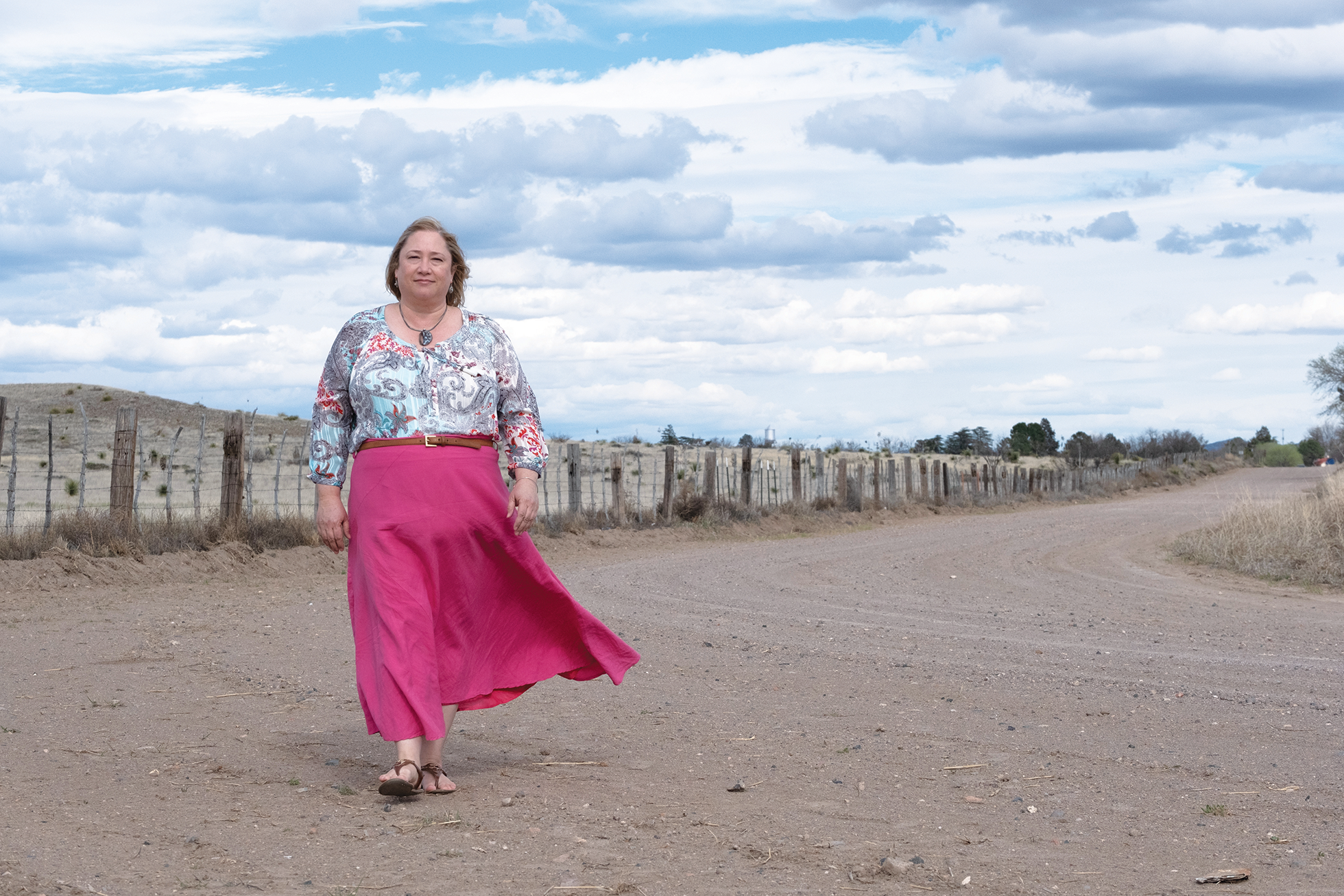
Cockrell is the only midwife in rural far West Texas, where she does prenatal visits, home births, and six weeks of postpartum care over an area spanning thousands of square miles. Last fall, she had clients in Fort Stockton, Midland, Alpine, Marfa, Kermit, Odessa, and Hobbs, New Mexico—often driving several hours one way for each home visit. She’s provided prenatal care for visitors to the area who otherwise would have gone without, and to clients who had missed appointments during past pregnancies because they were too far away. She delivered six babies for a woman who lives in the Permian Basin near Route 285, dubbed “Death Highway” because of the treacherous oil field traffic. She’s delivered babies in RVs for temporary oil field workers and on remote ranches like the Mellards’. Once, she delivered a baby in Big Bend National Park, for a woman whose husband was a ranger stationed near the Chisos Basin. Each year, she estimates she puts about 50,000 miles on her car for work alone.
The vast desert region is a stark example of the dearth of maternity care in rural areas around the state and country. More than half of Texas’ 254 counties have no OB-GYN. As rural hospitals struggle to stay afloat, maternity wards are often the first to go in an attempt to stave off full closure. Just 66 of Texas’ 158 remaining rural hospitals still deliver babies, according to the Texas Organization of Rural and Community Hospitals. In wide swaths of West Texas, residents are hours from basic reproductive health care. The rural health vacuum has created a Catch-22: Midwives like Cockrell could help fill in maternal health care gaps for low-risk pregnancies, but longer travel times to hospitals make home births more risky if something does go wrong.
People choose out-of-hospital births for different reasons. Many want a more personal and natural birth experience, without unwanted interventions like labor-inducing drugs or C-sections, which are on the rise and comprise more than one-third of Texas births. Sometimes the decision is cost-driven. Even Cockrell’s flat rate of $6,700 for prenatal, delivery, and postpartum care—steeper than many midwives to account for a “gas charge”—is more affordable than the average OB-GYN care and hospital delivery, particularly for those who pay out of pocket, like Mellard. Then there are travel concerns and costs: the fear of driving long distances while in labor, sometimes in the dark, without cell reception, through mountains and muddy ranch roads; the challenge of finding transportation, child care, and time off work for each prenatal appointment. (Cockrell says she’s seen a jump in clients in recent months, as the COVID-19 pandemic increases demand across the country for out-of-hospital births.)
For the Mellard family, it was a combination of factors. About six years ago, when she was pregnant with her fourth boy, Mellard’s water broke one night while they were still home at the ranch south of Marfa. The kids were in their pajamas when Mellard felt it happen and panicked. During her first three pregnancies, once her water broke, she had a baby within 30 minutes.
In the past, they had driven straight to the hospital as soon as she felt contractions, walking around the parking lot to kill time until they got closer together and she checked in. Now they were more than an hour from the nearest hospital in Alpine, and Mellard was sure she’d have the baby any moment. The family threw everything into their truck and took off: down the curved dirt road of the ranch, over the cattle guards, onto the ranch road, past the checkpoint, through Marfa, down Highway 90, and into Alpine.
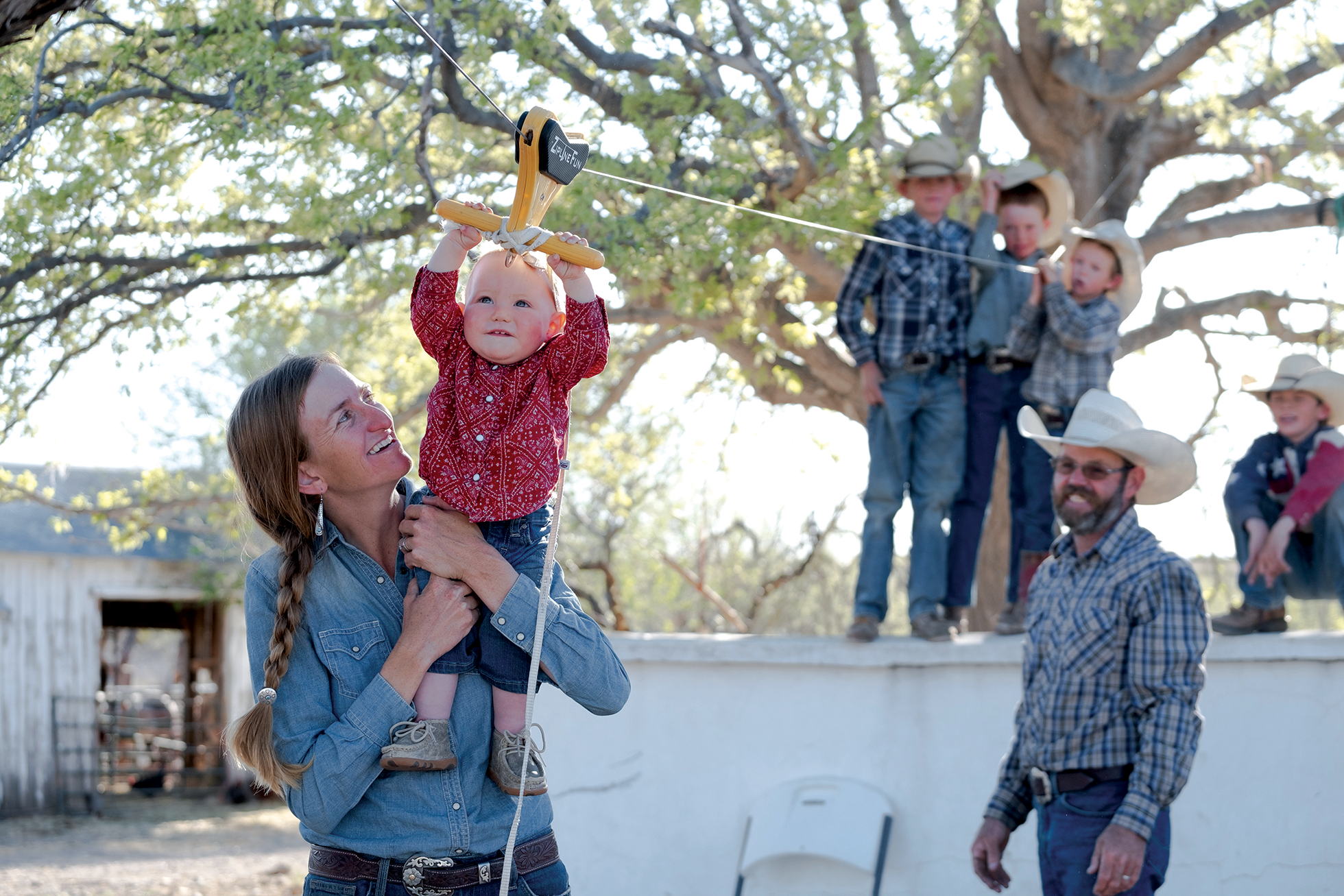
“It was a little crazy, I would say. A little panicky for sure,” Mellard says. “I was a little worried we’d deliver on the side of the road.”
They ended up making it to the hospital. But when Mellard found out she was pregnant again—a surprise—the couple turned to Cockrell, who had moved to Alpine from Odessa in 2017. So this time, it was Cockrell who made the journey in the dark, who worried about not making it. She did—the baby was born late that afternoon. They named her Dalleigh. “When you rope, you dally,” Mellard explains. “To stop the cow.”
Mellard calls her home birth “amazing.” She was able to walk around freely (“I don’t think you’re supposed to walk when you’re fixin’ to have a baby,” one of her boys interjects) and eat and drink water as she pleased (“At the hospital, they just let you have ice chips!” exclaims another). “If I could have had them all that way, I would have,” Mellard says. They’d considered it in the past, but before Cockrell moved to Alpine, the closest midwives were more than three hours away in Midland and Odessa—farther than the hospital.
Midwifery was common practice in the United States until the late 1800s, when medical clinics and hospitals proliferated and medicine became more professionalized. Doctors rose in prominence and began questioning the intelligence and qualifications of midwives, framing childbirth as a “pathologic” rather than natural process. By the mid-20th century, nearly all births were attended by doctors in hospitals. Midwives have since seen a resurgence in the U.S. in recent decades but still oversee just about 10 percent of births; in some European countries, they deliver the majority of babies.
Meanwhile, maternity care in the U.S., particularly in rural areas, is in crisis. More than half of rural counties, home to more than 2 million women of reproductive age, don’t have hospital obstetric services. The loss of this care in rural areas has been linked to an increase in out-of-hospital and preterm births. Rural areas have higher rates of infant and maternal death, and the overall maternal mortality rate in the U.S. is the highest in the developed world.
Midwives could help bring care to women in rural areas and improve maternal outcomes. Still, there remains a vast divide between many medical professionals and traditional midwives, particularly when it comes to controversial out-of-hospital births, which make up a small but growing number of U.S. deliveries. Maternal health experts are increasingly calling for better integration of midwives into the U.S. health system by expanding training opportunities and collaboration with physicians. More midwives could take on low-risk pregnancies, freeing up doctors to focus on complicated births. (Cockrell says she “specializes in normal.” If there’s any indication the pregnancy is veering out of that realm, the woman is transferred to a physician’s care.) And they could provide prenatal and other reproductive health services, particularly for low-income women or those in rural areas who would otherwise have to travel far or go without care.
A 2018 study found that states that did more to incorporate midwives in their health systems tended to have better maternal and infant health outcomes, while states with more restrictions generally did much worse. A 2014 series on midwifery from The Lancet, a leading medical journal, found that further integrating midwifery in both family planning and maternal and newborn care around the world could prevent about 80 percent of maternal and infant deaths.
In Texas, licensed midwives can deliver in homes or birthing centers without the supervision of physicians. But they are required to have permission from a doctor to carry prescription medication, including anti-hemorrhaging drugs. Doctors are often reluctant to expand midwives’ scope of practice, and midwives say they are often met with skepticism or derision when they transfer patients to hospitals.
The tension “creates a culture of fear and oppression” that can be harmful for everyone, says Laurie Fremgen, an Austin midwife and the president of the Midwives Advisory Board, part of the Texas Department of Licensing and Regulation, which regulates licensed midwives in the state. “Some midwives, every time they take a patient to the hospital, they have a complaint filed against them,” she says. The result is, “maybe she’s going to wait a little longer to bring patients in.”
For doctors, much of the concern is the patchwork of regulations and oversight across different states. Certified nurse-midwives (CNM), who are registered nurses and often deliver in hospitals, are licensed in all 50 states and are more readily welcomed by physicians. Direct-entry midwives, which include certified midwives (CM) and certified professional midwives (CPM), are not licensed nurses and do most births in homes and birthing centers. The two have different training and certification requirements; CMs are recognized in a small handful of states, while CPMs can legally practice in 34 states, including Texas. Cockrell is a licensed midwife (LM) in Texas and New Mexico and a CPM. Medical professionals sometimes use the term “lay midwife” to describe those who are not registered nurses.
“I think it boils down to a lack of understanding about our training,” Fremgen, an LM and CPM, says. Doctors are “used to a kind of university. We’re home-schooled is how I like to think about it.”
John Thoppil, an Austin OB-GYN and the current president of the Texas Association of Obstetricians and Gynecologists, calls the many midwifery labels an “alphabet soup” that is confusing to patients. He delivers at St. David’s Medical Center, where there are certified nurse-midwives on staff. Thoppil thinks that nurse-midwives are often as good as, or better than, doctors at managing low-risk births. But, he says, “there’s a little concern about the lay midwife community because there’s not necessarily a standardization of care about what’s appropriate—what someone should manage themselves, or what is safe to practice in a home birth setting or out-of-hospital setting.”
Thoppil and many other doctors say out-of-hospital births are inherently more dangerous. While the vast majority are without incident, a 2018 investigation from Gatehouse Media and the Sarasota Herald-Tribune found that in the United States, infants born at home or in freestanding birth centers were twice as likely to die compared with those born in hospitals. This was attributed at least in part to the lack of consistency when it comes to midwifery training and regulations in the U.S., limited collaboration with hospitals, and distrust between doctors and midwives.
But Cockrell and other midwives argue that for low-risk pregnancies, they provide better, more personal, and affordable care, with fewer hospital interventions like C-sections that can cause serious complications. Indeed, Cockrell became interested in midwifery when she was 16, after watching her mother hemorrhage following an episiotomy at a hospital in San Angelo. All four of Cockrell’s kids were later delivered by midwives.
Since she became a licensed midwife in 2001, Cockrell says she’s delivered about 500 babies. Demand could support several more midwives in the Big Bend region, she says, but for now she’s the only one. Most midwives, like doctors, cluster around cities. The disappearance of emergency care has made some hesitant to practice in rural areas, where they may be most needed.
Jim Luecke tries to prepare his pregnant patients who live far from Alpine for the possibility that they don’t get to the hospital in time. Sometimes he pulls the father aside. “Let’s go over things, in case you don’t make it,” he tells them. “Their eyes get wide,” he says. “Like, ‘What do you mean, if we don’t make it?’”
Usually, they do. But “there is a lot more risk involved when you’re that far away,” Luecke says. Sometimes, paramedics end up delivering the baby in the ambulance on the way to the hospital. Every once in a while, the dad does en route. Luecke’s even heard of women delivering their own babies alone. (“That’s one tough woman, though, that can do that.”)
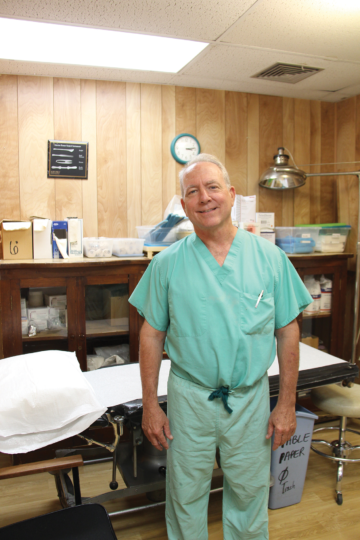
When Cockrell transfers patients to the hospital, she often brings them to Luecke. A family physician, Luecke is the only doctor in Jeff Davis County, where he’s practiced for the past 32 years. He did a home delivery once out on a ranch a long time ago, but it made him nervous, and other doctors gave him “flak” because of the risk, he says. “The problem is, when it goes well, it’s great. When it doesn’t, it can be a real disaster,” he tells me. Having a midwife “can be a real blessing,” as long as they do a good job, know their limitations, and know when to bring the patient to the hospital, he says, but “I think people have to realize that there’s a higher risk out here of having a midwife deliver than, say, downtown Austin. Because you’re just so far.”
Luecke, 62, is one of seven doctors (six general practitioners and one OB-GYN) who deliver babies at Big Bend Regional Medical Center in Alpine—the only hospital in a three-county area of more than 12,000 square miles. The COVID-19 pandemic has put further financial pressure on cash-strapped rural hospitals like Big Bend Regional, which furloughed some employees this spring. In April, its parent company filed for bankruptcy, though the Alpine hospital said it remains open and “unaffected.” Patients come from as far as Presidio, Sanderson, Van Horn, even across the border in Mexico, often traveling as many as 100 miles one way to give birth there. It’s one of just four hospitals in a cluster of more than 20 rural West Texas counties that still deliver babies, according to the Texas Organization of Rural and Community Hospitals.
Some patients rent a hotel room in Alpine the week before their due date. Others, especially those with high-risk pregnancies, rent a temporary place in Midland or Odessa for several weeks beforehand, since the Alpine hospital isn’t equipped to handle major complications or premature births before 35 weeks. “People out here are used to having to travel far for any service,” says Roane McLaughlin, the only OB-GYN in Brewster, Presidio, and Jeff Davis counties, who retired from private practice in Gainesville and joined the Alpine hospital in 2014. That distance can be particularly challenging when it comes to giving birth, she says. “An obstetric emergency is one of the most stressful emergencies, because you have two patients, instead of just one.”
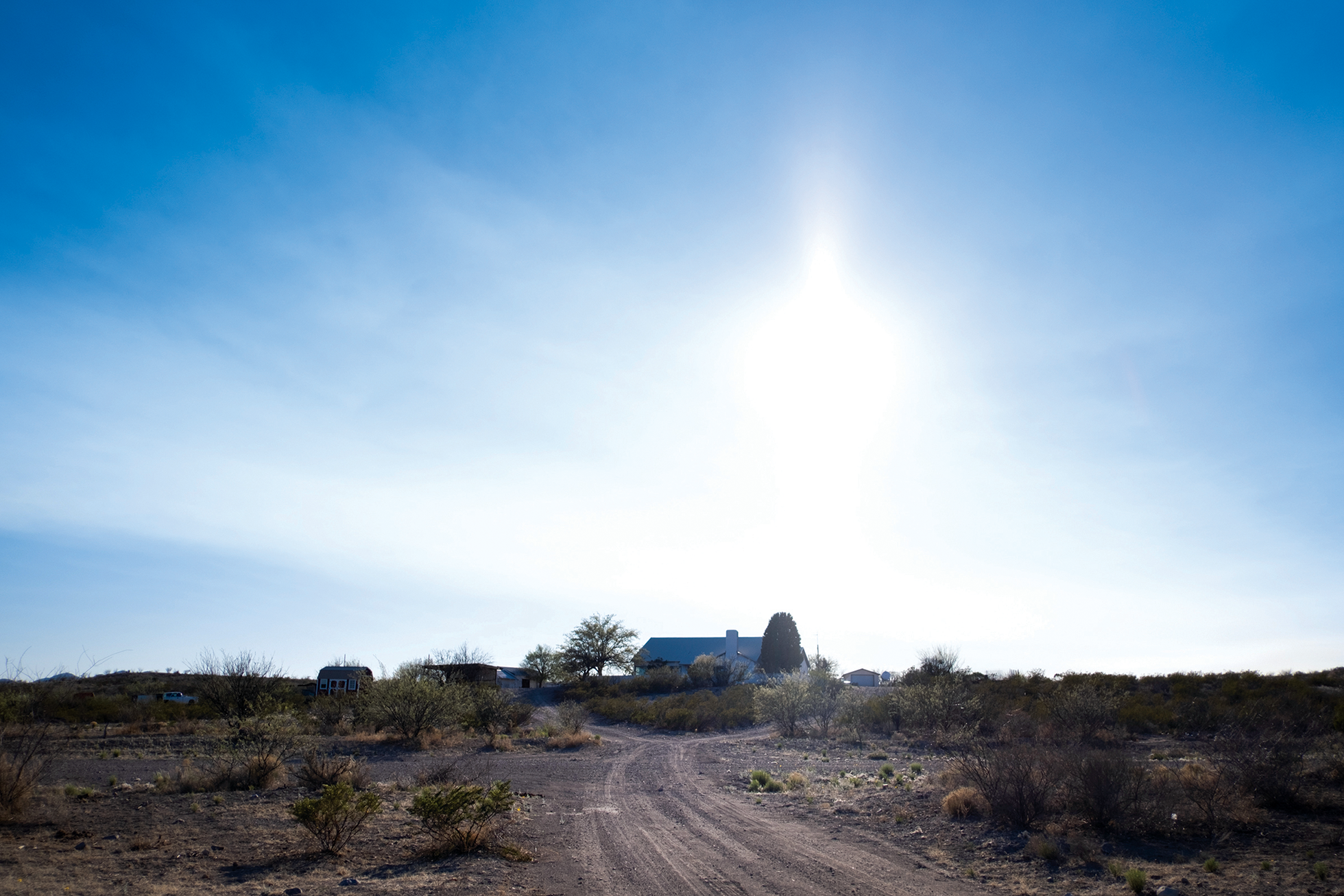
On a fall afternoon, Luecke shows me around his Fort Davis clinic: a small, century-old building that used to be the town’s auto shop. “Everything in this office is some form of antique,” says Roberta Daugherty, who works with Luecke. “Like their doctor,” he says, laughing. Luecke sees women for annual checkups and prenatal appointments here, about 20 miles northwest of the hospital. Pasted on the ceiling above a decades-old brown leather exam table are frayed magazine photos of shirtless men—for patients to look at during Pap tests, Luecke says. He points to a signed photo of a young Tom Selleck in a cowboy hat, hanging on the wood-paneled wall across from the table. “I gave him a flu shot once, out on one of the ranches. Nice guy.”
A Wichita Falls native, Luecke always wanted to be a small-town doctor, because “rural folks a lot of times don’t get that access.” His patients divide evenly among Medicaid, Medicare, private insurance, and self-pay—“which sometimes means no-pay,” he says. Luecke tries to help anyone who needs it. Once, he says, he traded an appendectomy for a truck engine. Being on call at the hospital, he sometimes sees pregnant patients who couldn’t afford or otherwise couldn’t access prenatal care—a few years ago, he did an emergency C-section on a woman who didn’t know she was having twins until Luecke delivered them. The country doctor estimates he’s delivered more than 3,000 babies, but he’ll likely stop in a few years. Obstetrics makes up the bulk of his late-night calls, and “like Willie Nelson says, ‘The night life ain’t no good life, but it’s my life,’” he tells me. “’Cause I get called in a lot.”
Cockrell says Luecke and other doctors in the area have been supportive of her and her patients when she brings them to the hospital. But here, too, some remain wary of home births. McLaughlin says that she supports midwives stepping in as doulas and educators and providing other routine women’s health services. But, “being medically trained, I would never recommend home delivery; hospital delivery is way safer.”
Thoppil, the Austin OB-GYN, echoes that sentiment: “Any patient has the potential to turn into a higher-risk scenario.”
When she found out she was pregnant in late 2012, Jennifer Boomer knew she didn’t want to give birth at a hospital. Living in Alpine, she figured it would be easy enough to transfer to Big Bend Regional if needed. So she hired Cockrell, who was still based in Odessa.
Boomer, a photographer, was in her early 30s and healthy. Everything seemed fine until she went into labor in late June. As she describes it, she labored for several days at home, while Cockrell monitored her and the baby. On the fourth day, she says, Cockrell suggested they go to the hospital, to make sure things were OK. There, an ultrasound showed the umbilical cord wrapped three times around her son’s neck.
Luecke, who was on call that night, did an emergency C-section, says Boomer. (Luecke says he doesn’t recall this specific case but that this kind of situation happens every so often.) Worried about the newborn, the hospital staff decided to send him to the closest neonatal intensive care unit—nearly 150 miles away in Odessa. Boomer stayed in Alpine recovering from the surgery.
She says she drove to the NICU the next day and first got to hold her son—who ended up being healthy—four days after he was born. She doesn’t blame Cockrell, who she says stayed with her at the hospital in Alpine. But it bothers her that she didn’t bring her there sooner.
When I ask Cockrell about Boomer’s delivery, she declines to talk about it, citing patient privacy. But generally, she says, there’s “no crystal ball knowing why a birth is taking longer or shorter.” She adds, “[Hospital] transfers happen. It’s not a sign of failure in care.” The guarantee she makes is that she’ll stay with the patient through it all; midwife means “with woman,” she says.
When Boomer got pregnant again a few years later, she knew she didn’t want to give birth in West Texas. She went to prenatal visits with McLaughlin, the OB-GYN who had recently moved to Alpine, until she was 30 weeks pregnant. Then she scheduled visits with a doctor in Dallas, where her parents live and where she often traveled for work. A few weeks before her due date, she moved in with her parents until her baby was born to be near the hospital. For six weeks after that, she and her then-husband and kids rented a spot at a Dallas extended stay hotel for about $6,000.
“It was a huge cost for us to decide to have a baby somewhere else, but I knew it was really, really important to not give birth in West Texas,” she says. “Even if I was doing it at the [Alpine] hospital—if I had another baby born that there was a problem with, they would have to medevac that kid out.” It was a requirement for her that the hospital have a NICU attached, just in case. Fortunately, she gave birth to a healthy baby girl. “I was holding her right after.”
But Boomer, who has since moved to Dallas permanently, recognizes she was lucky to have the flexible schedule and the money to pay for travel and lodging in order to have her daughter in the city. For pregnant women who live far from hospitals and NICUs and can’t afford to relocate, what choice do they have but hope that everything goes OK? “It’s crazy,” Boomer says. “You always know when you live in West Texas that it is very rural, but until you are giving birth there and something goes wrong in your birth plan, then it really just hits you in the face how much you really are risking.”
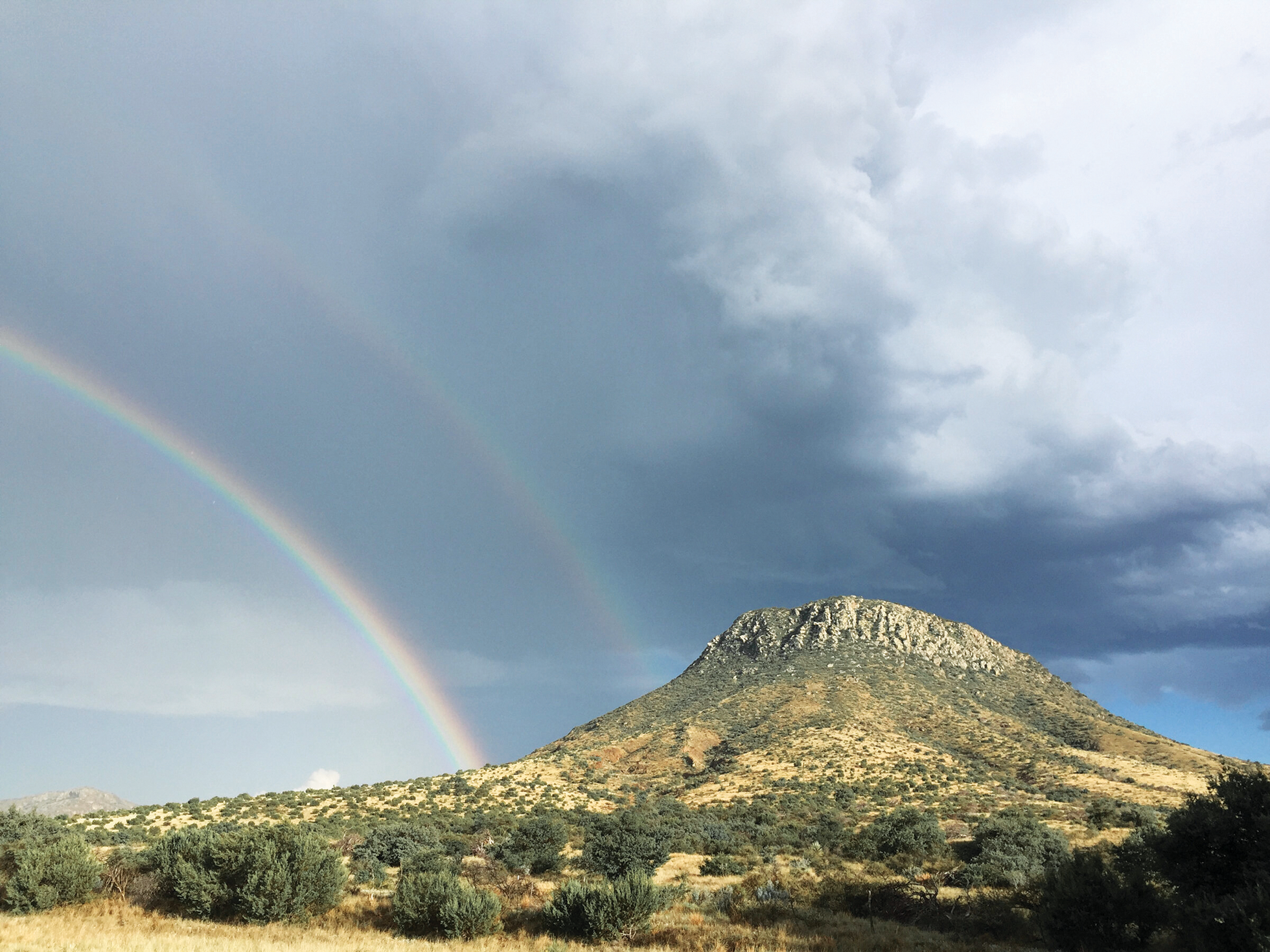
Texas midwives say small changes could help women access care and improve safety. The state could extend the period they are allowed to provide postpartum care beyond six weeks, for one. And they say Texas should get rid of the requirement for a physician’s approval to carry certain prescription drugs that may be necessary for a safe delivery.
Beyond that, Texas needs a “change in mindset” when it comes to addressing disappearing rural health care and the role for midwives to play as a “bridge for care,” Cockrell says. Right now, she says there’s a lack of understanding of what it’s like to deliver babies in a place like far West Texas. “Even my midwife counterparts in Dallas, Austin, Houston cannot even fathom what it’s like to drive an hour and a half or two hours away from a city, in the middle of a black, star-laden sky to a 2 a.m. birth out on a ranch,” she says. Especially with the shuttering of rural maternity wards around the state, Cockrell says there needs to be a refocusing on midwifery to fill the gaps. “Women are gonna give birth whether we like it or not and whether there’s a hospital or not,” she says. “So we need someone trained who can stabilize these women, maybe deliver the baby.” Otherwise, “more dads are going to be delivering on the side of the road, with nobody to help these poor women.”
On a late afternoon in October, after a prenatal visit in Marfa, Cockrell takes me on a drive through the Davis Mountains, where she comes every so often to clear her mind. “I love that I feel small here,” she says as we wind between the sloping green hills and rock faces. “Because sometimes, with midwifery, you’re the person responsible to stop a hemorrhage or to resuscitate a baby. And you have to be bigger than life, emotionally. So when you feel small again, it’s just a relief.” She points to a cluster of cottonwood trees whose leaves are beginning to turn golden. “Look at that. That’s so beautiful.” Soon, she says excitedly, “it will look like the whole valley’s on fire.”
